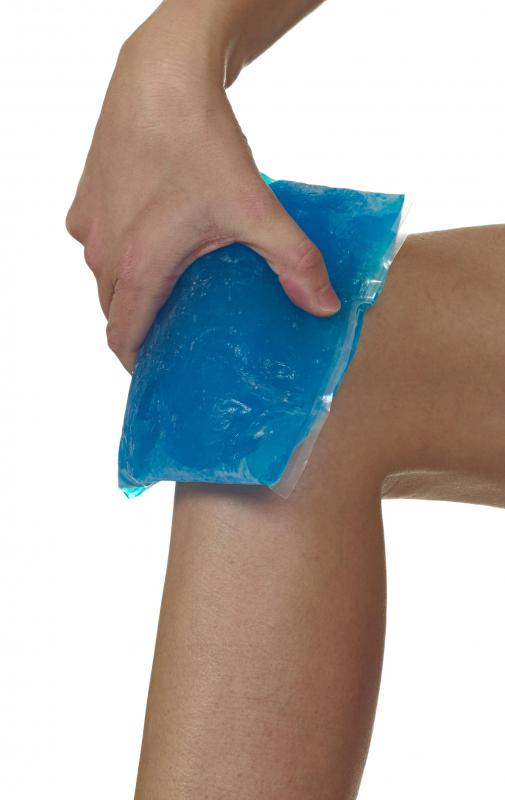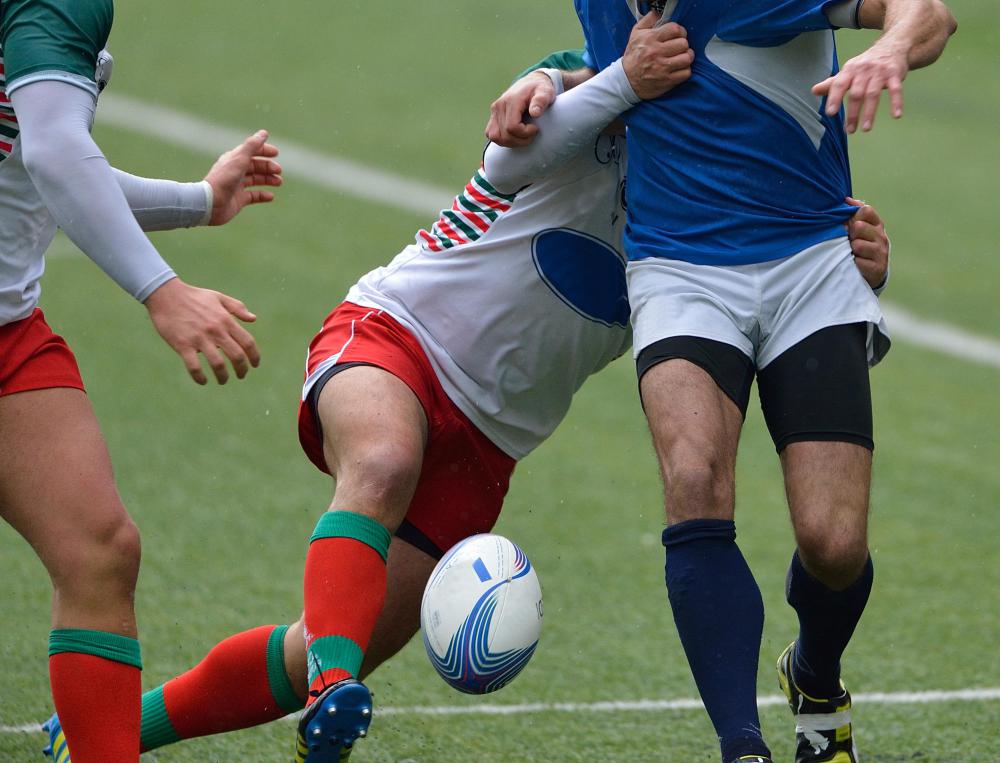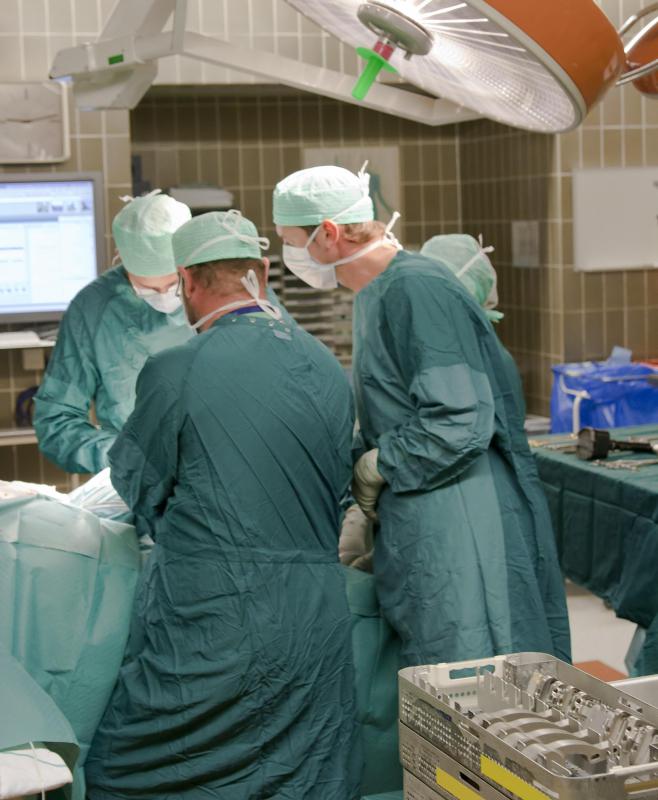At TheHealthBoard, we're committed to delivering accurate, trustworthy information. Our expert-authored content is rigorously fact-checked and sourced from credible authorities. Discover how we uphold the highest standards in providing you with reliable knowledge.
How do I Treat a Torn Knee Ligament?
A person can treat a torn knee ligament at home with rest, support and pain management. In some cases, however, a torn ligament is severe enough to require a visit to a doctor and maybe even surgery. The best way to treat a torn knee ligament also depends on which ligament is injured.
The knee's four ligaments work together to restrict the movement of the shin and thigh bones. The cruciate ligaments work to restrict forward and backward movement while the collateral ligaments limit the movement of these bones from one side to the other. The two cruciate ligaments are located inside the knee joint while the collateral ligaments are on the outside.

If one of the collateral ligaments on the outside of the knee is injured, it may heal on its own. In most cases, these ligaments do not require special treatment. A person may use over-the-counter (OTC) pain relievers to manage discomfort and rest the knee as much as possible, keeping it elevated above the patient’s heart level. For example, the injured party may rest the knee for a few days and reintroduce movement slowly and gradually. Using ice packs to reduce swelling and a compression bandage to support the knee may help.

Sometimes a knee ligament injury involves a torn cruciate ligament, such as the anterior cruciate ligament (ACL), which diagonally crosses the knee joint. This type of injury is common among those who play sports. Injuries of the posterior cruciate ligament (PCL), the ligament that crisscrosses with the ACL, are more common after accidents that involve a high level of impact. A torn ACL or PCL may be treated in the same manner as a torn collateral ligament with rest, elevation, support and ice. Using such measures to treat a torn knee ligament may only prove helpful for small cruciate ligament tears, however. Surgery is often required to treat a more severely torn ligament.

Cruciate ligament surgery works to treat a torn knee ligament by reconstructing it rather than replacing it. For this procedure, a portion of a ligament or tendon from another part of the patient’s body may be used as a graft for the damaged ligament. A graft is a procedure used to attach one type of body tissue to another type of body tissue. In some cases, doctors use ligaments from human cadavers to reconstruct torn knee ligaments. Risks of knee ligament surgery include those typical of other surgeries, such as excessive bleeding, abnormal blood clotting and infection.
AS FEATURED ON:
AS FEATURED ON:

















Discussion Comments
I had a knee problem with my left knee. The problem area on my knee is on the inside. It happened while I was playing kabbadi. I have a problem that I don't have confidence while running and anytime my knee starts having severe pain, I have to just sit and wait for the pain to subside. The pain remains only on the outer side of my left leg. I do not had an MRI done.
I had a knee problem with my left knee. The problem area on my knee is on the inside. It happened while I was playing cricket when I tried to reverse back while I was running. I have a problem that I don't have confidence while running and anytime my knee starts having severe pain, I have to just sit and wait for the pain to subside. The pain remains only on the outer side of my right leg. I have not had an MRI done.
i haven't done an mri yet, so i can't tell, but i can't sit on or fold completely my right knee because it aches too much. can anyone tell me whether its collateral or anterior cruciate ligaments or menicus or whether any of these ligaments have been torn? thanks in anticipation.
@ValleyFiah- As experience from my own myriad of knee problems, you generally don't need to worry about infection unless you have bursitis. Bursitis is what people often call water in the knee, and is caused by an inflamed bursa sac. The bursa is filled with an oil like lubricant and protects your joints from shock, etc.
An infected bursa will turn red and feel hot to the touch. If you think that you have an infected bursa you should have your doctor pull a fluid sample for analysis. If it comes back positive, you will need to have it drained and be put on antibiotics. There are so many different parts to a knee, that you should have a doctor rule out knee ligament and cartilage tears as well as bursitis.
@ValleyFiah- It sounds like you may have a torn meniscus. I have had a torn meniscus and it is not fun. Symptoms of a torn meniscus include swelling, tenderness and pain in the area of the meniscus (on the edges of the knee between your thigh and shinbone), popping or clicking in your knee, and limited motion. If your knee is buckling, this is also a potential sign because the meniscus acts to stabilize your knee.
Generally, a meniscus torn from a sports related injury causes more pain in one side of the knee since the knee has two and only one usually tears. If the injury is severe, you may also have torn ACL and MCL ligaments along with a torn meniscus (blown out knee).
If you have been having pain for this long, I would advise you to go see a doctor so you can have him or her examine your knee. They will usually perform a very careful visual inspection as well as an x-ray, MRI or both. A meniscus tear does not necessarily mandate surgery, but if the tear is restricting movement, surgery may be necessary.
How do I tell when I need to see a doctor about my knee pain? I have had severe knee swelling and pain for the last four weeks, causing my knee to be very stiff buckle under certain motions. The swelling is only in a very small area at the bottom left of my left knee (imagine your knee split into four quadrants). What ligament is in this area? Do I need to worry about my knee becoming infected if I do not have a doctor examine it? Is it normal for swelling to take this long to go down?
Post your comments